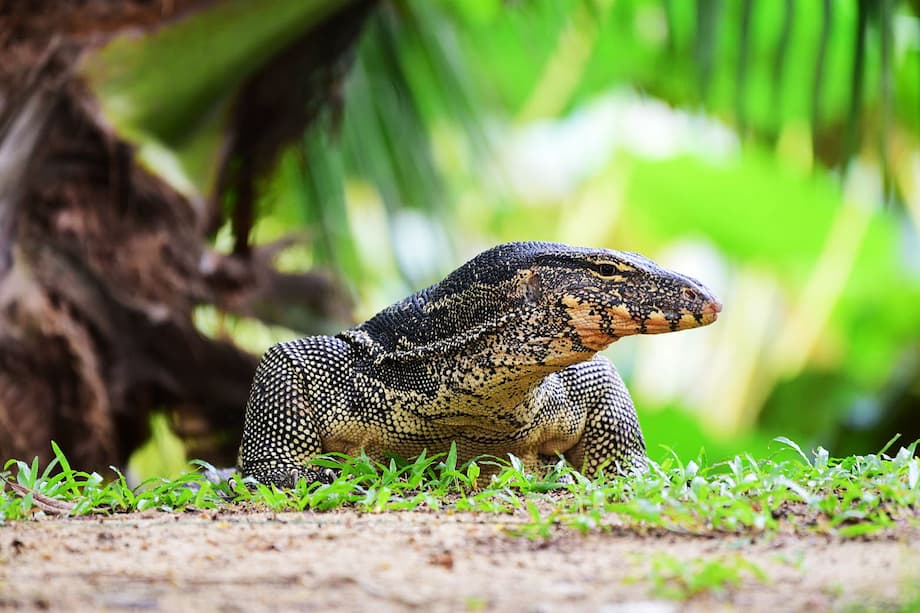Bangkok’s Water Monitors: From Urban Curiosity to Economic Opportunity
In a landmark move, Thai authorities have approved the commercial breeding of the Asian water monitor (Varanus salvator), a species long associated with Bangkok’s parks, canals, and wetlands. Locally known as the “Bangkok Dragon” or hia, these large lizards have become a quirky symbol of the city, often spotted basking by lakes in Lumpini Park or meandering through urban waterways. Now, with new regulations in place, the water monitor is poised to become Thailand’s next major “economic animal,” with far-reaching implications for conservation, industry, and urban life.
- Bangkok’s Water Monitors: From Urban Curiosity to Economic Opportunity
- Why Legalize Commercial Breeding of Water Monitors?
- How Will Commercial Breeding Work?
- The Economic Promise: Leather, Exports, and Sustainability
- Regulatory Framework: Ensuring Conservation and Compliance
- Cultural and Ecological Significance of the “Bangkok Dragon”
- Broader Implications: Thailand’s Model for Sustainable Wildlife Utilization?
- In Summary
Why Legalize Commercial Breeding of Water Monitors?
The decision to permit commercial breeding of water monitors stems from a confluence of ecological, economic, and social factors. As Bangkok’s urban sprawl has expanded, so too has the population of water monitors, leading to frequent complaints from residents and businesses. Authorities regularly receive requests to remove these reptiles from private properties, and hundreds have been captured from public spaces and relocated to wildlife breeding centers.
Yet, the water monitor is more than just a city dweller. It plays a vital role in urban ecosystems as both a top predator and a scavenger, helping to control populations of pests and clean up carrion. Wildlife researcher Rujira Mahaprom notes that, while generally harmless to humans, water monitors can be a nuisance for fish farmers and are sometimes viewed with suspicion or fear due to their size and appearance.
Recognizing both the challenges and opportunities presented by the species, the Ministry of Natural Resources and Environment, following recommendations from the Wildlife Preservation and Protection Committee, issued a ministerial regulation in late 2024 granting special permission for commercial breeding. The policy aims to address public complaints, reduce illegal trade, and create new economic value from a species that is already abundant in urban Thailand.
Strict Protections Remain in Place
Despite the new commercial opportunities, the Asian water monitor remains a protected species under the Wild Animal Reservation and Protection Act. Capturing wild specimens is still strictly illegal, with violators facing up to 10 years in prison and fines of up to 1 million baht (about $30,000). All breeding stock must be sourced from licensed wildlife stations, and every farmed lizard will be microchipped to verify its origin and prevent illegal harvesting from the wild.
How Will Commercial Breeding Work?
The Department of National Parks, Wildlife and Plant Conservation (DNP) has established a controlled price for breeding stock: 500 baht (about $15.50) per animal, which includes a 100-baht microchip fee. The initial breeding program will be based at the Khao Son Wildlife Breeding Station in Ratchaburi Province, where nearly 300 water monitors are currently housed after being removed from urban environments due to nuisance complaints.
To participate in the breeding program, buyers must:
- Hold a valid license for breeding protected wildlife or operating a zoo
- Own the land used for breeding or have written consent from the landowner
- Have no criminal record under the Wildlife Preservation and Protection Act
- Obtain breeding stock only from authorized DNP stations or licensed farms
All transactions and breeding operations are subject to strict oversight, including mandatory reporting of offspring and regular inspections by the DNP. The goal is to ensure that commercial breeding does not threaten wild populations and that all activities remain transparent and traceable.
International Trade and CITES Compliance
The Asian water monitor is listed under Appendix II of the Convention on International Trade in Endangered Species of Wild Fauna and Flora (CITES), which allows for regulated international trade. The DNP plans to survey wild populations and monitor breeding operations to ensure full compliance with CITES regulations, thereby safeguarding the species while enabling legal exports.
The Economic Promise: Leather, Exports, and Sustainability
Perhaps the most significant driver behind the new policy is the economic potential of water monitor farming, particularly in the luxury leather market. The lizard’s distinctive hide, which features a unique blend of crocodile and snake-like patterns, is highly prized by international fashion brands for use in bags, shoes, and accessories.
According to the Kasikorn Research Centre, water monitor skins can fetch between 4,200 and 14,000 baht (about $115 to $385) per square meter, far surpassing the value of traditional cow or buffalo leather. Thailand’s processed exotic leather exports are already valued at around $200 million annually, with Europe, China, and Japan as major markets. By comparison, cowhide exports are worth about $600 million.
Currently, the Philippines is the only major exporter of Asian water monitors for the global leather trade. With the new breeding program, Thailand aims to capture a larger share of this lucrative market, potentially boosting exports and creating new jobs in rural and urban areas alike.
Environmental Benefits
Beyond economic gains, water monitor farming is being promoted as an environmentally friendly alternative to traditional livestock. Unlike cattle and buffalo, monitor lizards do not produce methane gas during digestion, which means their farming could help reduce greenhouse gas emissions. Some estimates suggest that switching to monitor lizard leather could lower the carbon footprint of the leather industry by millions of tonnes per year.
This environmental angle is a major selling point for the new industry, especially as global consumers and luxury brands become increasingly concerned with sustainability and ethical sourcing.
Regulatory Framework: Ensuring Conservation and Compliance
The Thai government has taken care to design a regulatory framework that balances economic development with conservation. Key features of the system include:
- Microchipping: Every farmed water monitor is microchipped to verify its origin and prevent laundering of wild-caught animals.
- Licensing: Only qualified individuals and companies with proper facilities and no history of wildlife violations can obtain breeding permits.
- Strict Penalties: Illegal capture, possession, or trade of wild water monitors remains punishable by severe fines and imprisonment.
- Mandatory Reporting: Breeders must report all births, deaths, and sales to the DNP, which conducts regular inspections.
These measures are designed to prevent the kind of overexploitation that has plagued other wildlife industries and to ensure that commercial breeding does not undermine conservation efforts.
International Perspectives and Trade Regulations
The global trade in monitor lizard products is subject to a patchwork of regulations. While Thailand and Malaysia allow breeding and production under license, Indonesia operates a quota system for capture and export. The United States and European Union permit imports with a valid CITES permit, but China and Australia prohibit trade in monitor lizard products altogether. This complex regulatory landscape underscores the importance of robust tracking and compliance systems to maintain Thailand’s reputation as a responsible exporter.
Cultural and Ecological Significance of the “Bangkok Dragon”
For many Bangkok residents, the water monitor is more than just a potential source of leather or economic gain. The lizard has become a fixture of city life, inspiring everything from public sculptures to social media memes. Its informal Thai name, tua ngern tua thong (“silver-gold lizard”), reflects both its distinctive appearance and its ambiguous status in local folklore—sometimes revered, sometimes feared.
Ecologically, water monitors are important urban scavengers and predators, helping to maintain balance in city ecosystems. Their presence in parks and waterways is a testament to Bangkok’s unique blend of urban development and biodiversity.
Public Reaction and Future Prospects
The announcement of the commercial breeding program has generated significant public interest and debate. Conservationists and industry groups alike are watching closely to see how the policy unfolds. The Thai Tanning Industry Association has welcomed the move, citing the potential for increased exports and job creation. Meanwhile, wildlife experts caution that accurate population data and ongoing monitoring will be essential to ensure that commercial breeding does not inadvertently harm wild populations.
Chalerm Poommai, director of the Wildlife Conservation Office, explained, “Commercial breeding could help manage populations, but accurate population data is needed before introducing wider controls.”
Advance orders for farmed water monitors have already exceeded 200, indicating strong demand from entrepreneurs eager to enter the new market. The DNP has pledged to conduct regular surveys of wild populations and to adjust regulations as needed to maintain a balance between economic development and conservation.
Broader Implications: Thailand’s Model for Sustainable Wildlife Utilization?
Thailand’s decision to legalize and regulate the commercial breeding of water monitors could serve as a model for other countries grappling with similar challenges. By combining strict protections for wild populations with carefully managed commercial opportunities, the policy aims to harness the economic potential of native wildlife without sacrificing conservation goals.
As the program rolls out, its success will depend on effective enforcement, transparent reporting, and ongoing collaboration between government agencies, industry stakeholders, and conservation groups. If managed well, the initiative could transform the “Bangkok Dragon” from an urban oddity into a symbol of sustainable development and responsible wildlife management.
In Summary
- Thailand has approved the commercial breeding of Asian water monitors, a species long associated with Bangkok’s parks and waterways.
- The policy aims to address urban nuisance complaints, reduce illegal trade, and unlock new economic opportunities, especially in the luxury leather market.
- Strict regulations remain in place to protect wild populations, including microchipping, licensing, and severe penalties for illegal capture or trade.
- Water monitor farming is promoted as an environmentally friendly alternative to traditional livestock, with potential to reduce greenhouse gas emissions.
- The initiative could boost Thailand’s exotic leather exports and create new jobs, but ongoing monitoring and enforcement will be crucial to ensure sustainability.
- The program reflects a broader trend toward sustainable wildlife utilization, balancing economic development with conservation.












